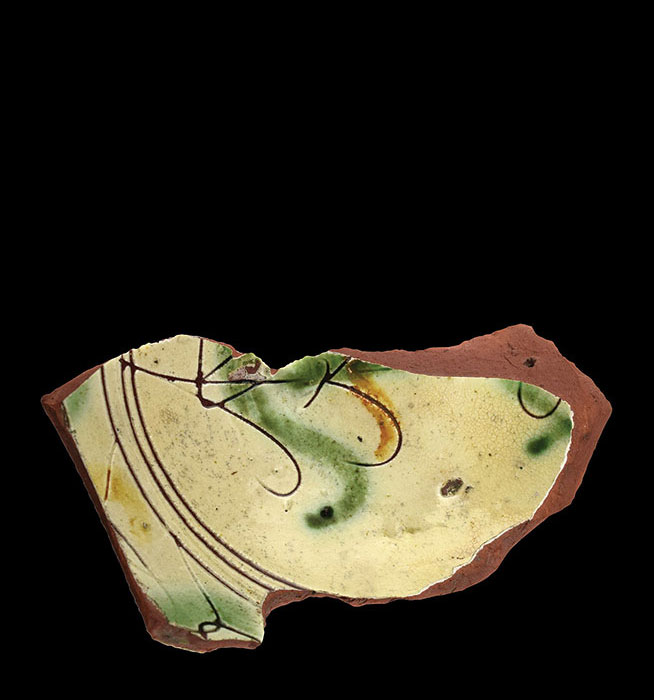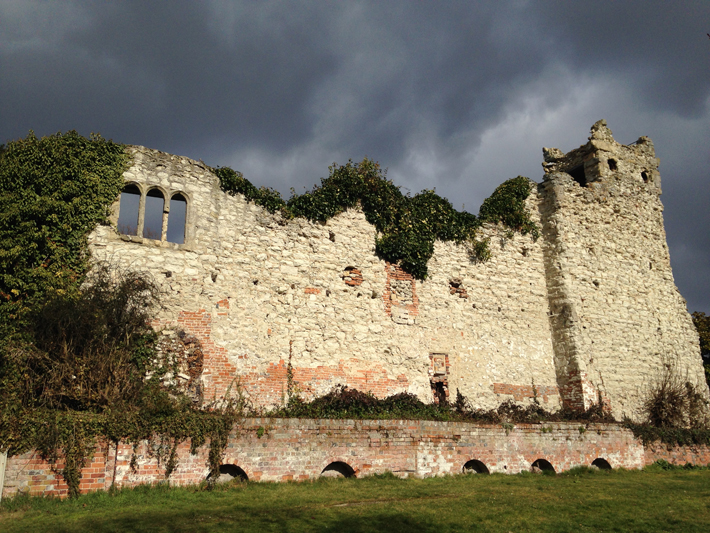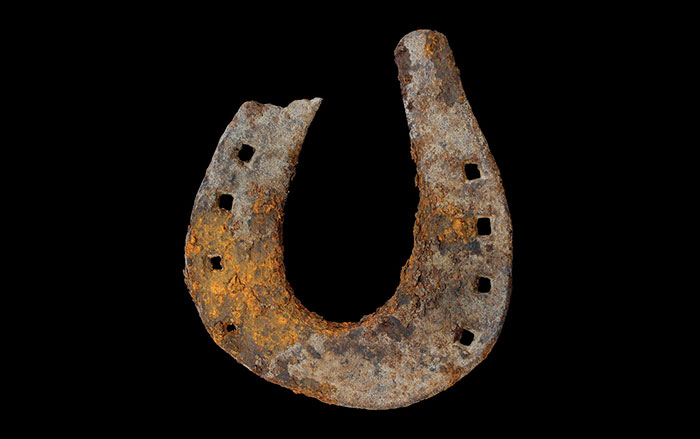
What is it?
Sgraffito slip-decorated plate
Culture
North Italian
Date
Ca. A.D. 1630
Material
Ceramic
Found
Boston, Massachusetts
Dimensions
3.75 inches long, 2.5 inches wide
Boston city archaeologist Joe Bagley says that when he first saw the sherd, he honestly had no idea what it was. Although it is one of the largest pottery fragments uncovered during excavations at the Pierce-Hichborn House in Boston’s North End, and its decoration is well preserved, neither he nor anyone on his team had seen anything like it in any similar context. “The combination of red ceramic with white and green decoration is almost unheard of from New England sites, so we knew it was something different.” It turned out to be one of the oldest—and surely one of the most expensive—European ceramics ever found in Boston.
The Pierce-Hichborn House, which is adjacent to the Paul Revere House, dates to about 1711, but there were at least two earlier residences on the site. The first likely belonged to the carpenter Bartholomew Bernard, who lived there between 1645 and 1656, and a later one, that of the mariner John Jeffs, a resident from 1656 to 1676. But it’s possible, says Bagley, that the plate was deposited even earlier by an unknown owner, and that it is associated with one of Boston’s first European settlers. “We are seeing that downtown Boston in the early seventeenth century was a wealthy port with wealthy individuals,” says Bagley, “and that despite Puritan rules and regulations against conspicuous wealth, in private homes people showed off their expensive and highly decorated goods.” While during the eighteenth century, the ceramic trade was limited almost exclusively to English, Dutch, and Chinese goods, during the seventeenth century, many products—especially ceramics—came to Boston from across Europe, including Germany, Portugal, the Netherlands, England, France, Spain, and Italy. Says Bagley, “Despite the overall dark and dreary impressions we get from Puritan stories and popular history, ceramics, glass, and other goods found in Puritans’ homes were often very bright, colorful, and fancy.”












